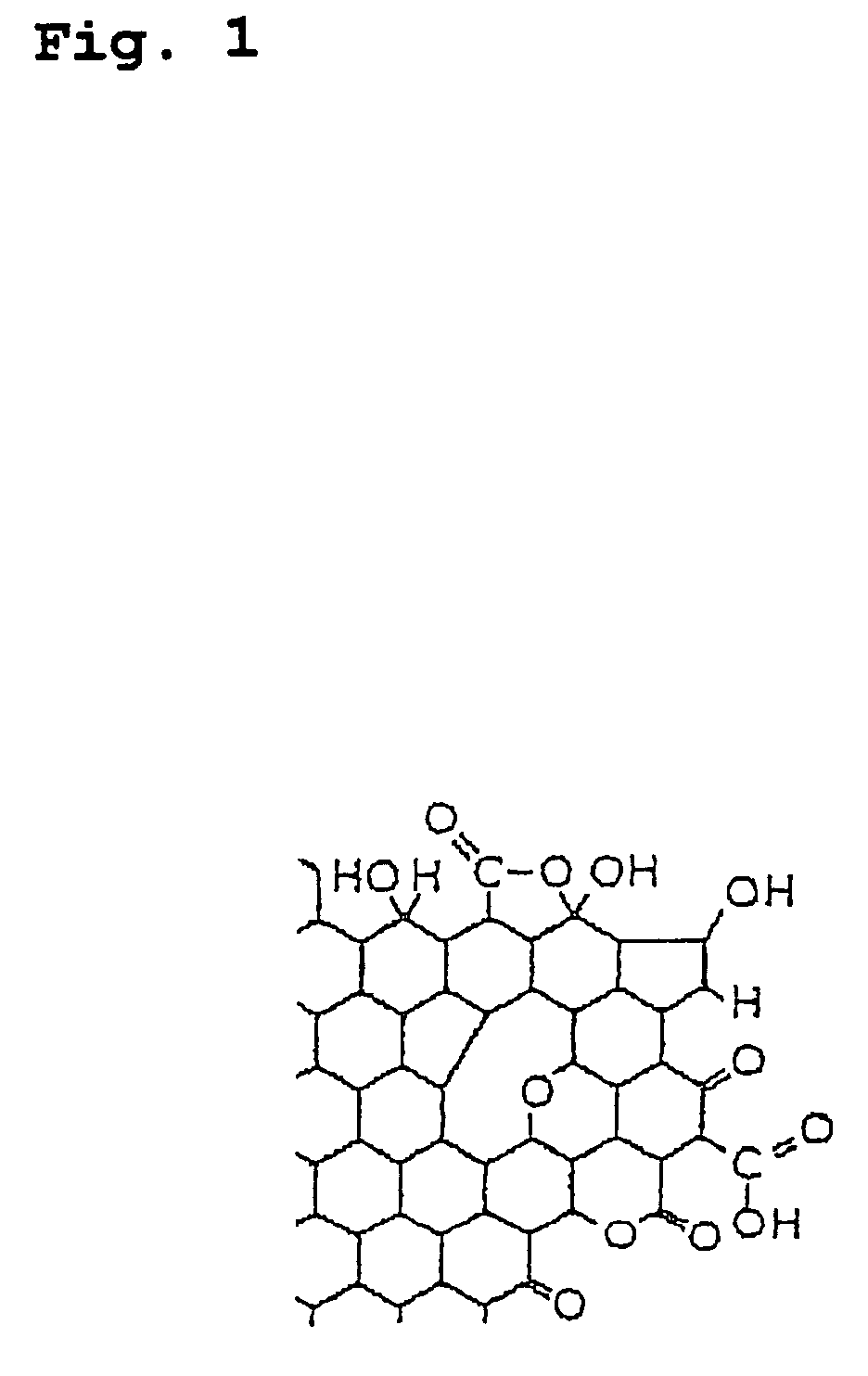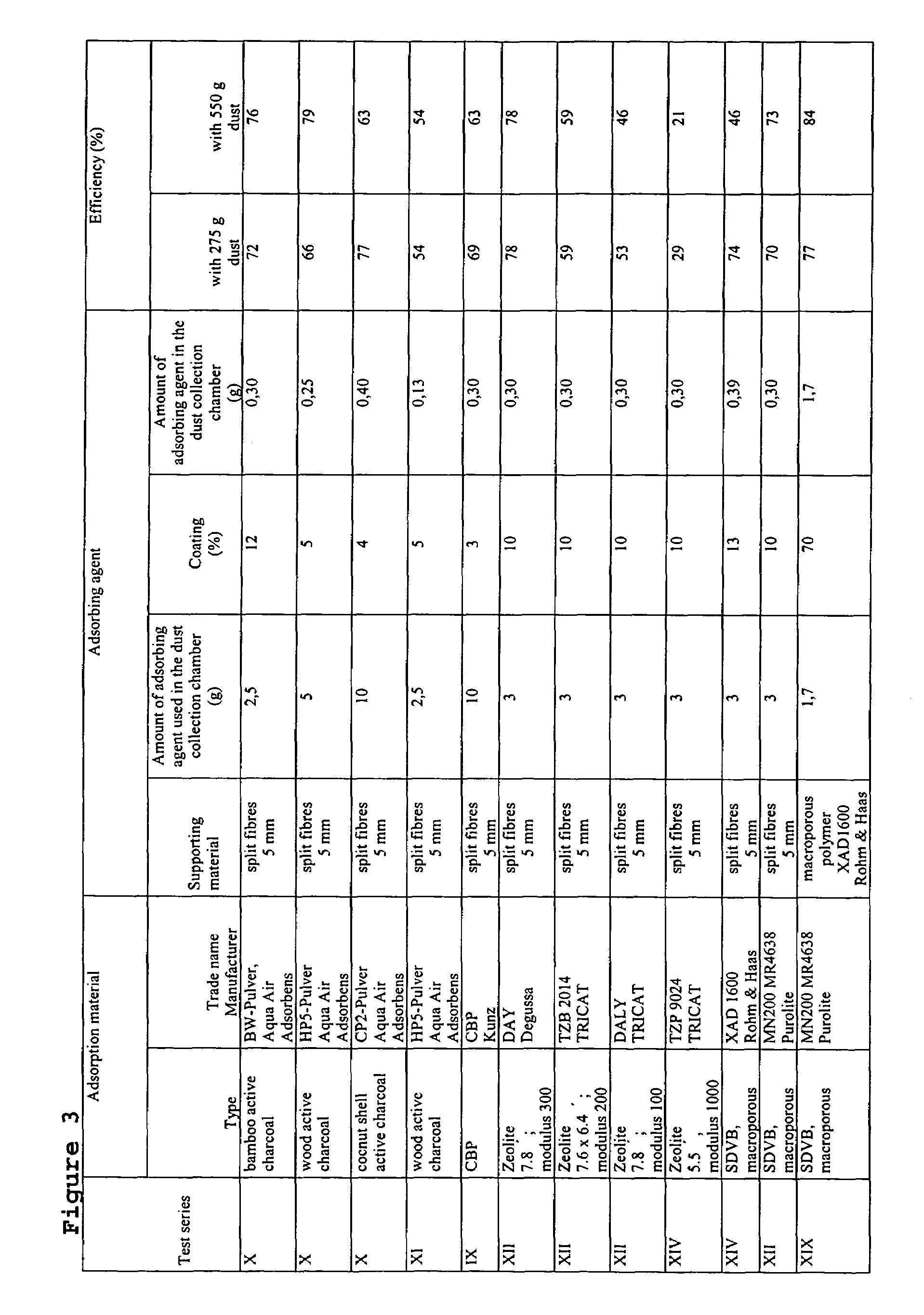Absorbing agent, dust collection chamber and method for adsorbing odours
a technology of adsorption agent and dust collection chamber, which is applied in the field of new adsorption agent, can solve the problems of filter material easily becoming clogged, unable to achieve normal operation, and adsorption material used purely in powdery form with a comparable mean particle siz
- Summary
- Abstract
- Description
- Claims
- Application Information
AI Technical Summary
Benefits of technology
Problems solved by technology
Method used
Image
Examples
example
[0051]The tests which were carried out are described below with the aid of examples.
[0052]1) Preparation for Measurement:
[0053]The cylinder vacuum cleaners, type Miele S512-1 were operated with an empty filter bag for several hours before the series of measurements in order to minimise any odour already present in the assembly. One day before the actual start of measuring, a filter bag was inserted into each of the assemblies. Thereafter each assembly was completely sealed off so as to prevent the outgoing air escaping through any other aperture than the drilled sampling aperture (diameter 13 mm). Thereafter the assemblies were placed in the hot cabinet which was set at 20° C. Furthermore, the necessary amount of coffee for the entire series of measurements was removed from a 500 g vacuum pack, weighed and sealed in 5 g portions.
[0054]2) Sequence of Tests:
[0055]The test surface for sucking up the coffee / dust mixture comprises a sheet of laminate with a basal surface of 1.21 m×1.85 m...
PUM
| Property | Measurement | Unit |
|---|---|---|
| particle size | aaaaa | aaaaa |
| particle size | aaaaa | aaaaa |
| particle size | aaaaa | aaaaa |
Abstract
Description
Claims
Application Information
 Login to View More
Login to View More - R&D
- Intellectual Property
- Life Sciences
- Materials
- Tech Scout
- Unparalleled Data Quality
- Higher Quality Content
- 60% Fewer Hallucinations
Browse by: Latest US Patents, China's latest patents, Technical Efficacy Thesaurus, Application Domain, Technology Topic, Popular Technical Reports.
© 2025 PatSnap. All rights reserved.Legal|Privacy policy|Modern Slavery Act Transparency Statement|Sitemap|About US| Contact US: help@patsnap.com



